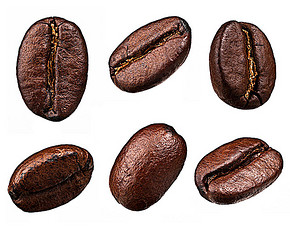Description of the flavor of Alishan Mazu coffee, the history of Alishan Mazu coffee
Alishan Mar Coffee, a fine coffee in Taiwan, is produced in Alishan, Chiayi County, Taiwan Province. Mafeel is a language taken from the Zou people of the Alpine nationality in Alishan, which means "delicious and delicious". Alishan Mafeel Coffee [1] belongs to alpine coffee and belongs to the high-quality boutique coffee in Taiwan. It ranks first in Asia and eighth in the world. Coffee trees are mainly planted in southern Taiwan, such as Alishan in Chiayi County, Taiwan. because of its high altitude, Alishan is not only suitable for growing tea, but also more suitable for growing coffee. It belongs to the boutique coffee in coffee. Mafeel is taken from the language of the Zou people of the Alpine nationality in Alishan, which means "delicious". Alishan is the area where coffee is grown, while the coffee is grown by the Zou people themselves, and it is also named Mafeel, and the coffee grown belongs to Taiwan coffee. Due to the low production of Mazu coffee in Alishan, Taiwan is rare and expensive. Alishan Mafeel is planted in the Alishan Mountains, and the Alishan Mountains are uniquely located in the global coffee belt. Because of the high altitude in the mountain area and the temperature difference of more than 10 degrees between day and night, the coffee beans produced are of the best quality, with plump fruit grains, thick pulp, sweet and mellow taste, sweet taste, no astringency, no bitterness and no acid, which perfectly presents the delicious coffee with the best quality and the most unique flavor. "Zhenggang" native flavor of "Taiwan Alishan Maha Coffee".

The History of Alishan Mazu Coffee
Alishan coffee is the most special and superior coffee in Taiwan, and its output is relatively small, and it is rare and expensive. Alishan, located 75 kilometers east of Chiayi City, Taiwan, is located above 2000 meters above sea level, adjacent to the Yushan Mountains and Yushan National Park in the east, surrounded by high mountains, with a cool climate, with an average temperature of 10.6 degrees Celsius in summer and 14.3 degrees Celsius in summer. the average temperature in winter is 6.4 degrees Celsius. The air in the Great Ali Mountain area is fresh all year round, there is no pollution, the climate is humid, and it is foggy and rainy all the year round, because the special gas of Alishan not only sends out good tea every year, but also is very suitable for growing coffee, and the baked coffee is also very good. The taste is not bitter and astringent, and the flavor is mellow and rich. Alishan's unique climate and altitude conditions give birth to high-quality mountain tea, orchids and horseradish (Washa rice), which are known in Japan as the best. The number one coffee in Taiwan is not in Gukeng or Dongshan, but in Leye Village in Alishan.
The varieties of Alishan coffee are grown in Arabica. The growing environment of this kind of coffee is more harsh. Taiwan is located in the subtropics. The temperature is higher all the year round, and coffee trees like shade. If the coffee tree is planted alone, it may be killed by the strong sun. The Ali Mountains area is covered with forests and there are many betel nut trees, so most of his coffee trees are planted in the betel nut garden, because the betel nut tree grows fast and has luxuriant branches and leaves. It can not only absorb the sun but also get shade early, which is very suitable for the growth of coffee. In the coffee garden in Ali Mountain, the coffee trees are all hidden in the shade of betel nut trees. Coffee trees are also very strong, and the coffee produced is relatively good. Coffee trees are planted and coffee plants emit different fragrances and tastes depending on where they are planted, and they are still coffee varieties with great personality. Taiwan's Alishan Coffee has been very popular in recent years.
There are typhoons in Taiwan every year, and the roots of coffee trees generally do not go very deep into the soil. Once they encounter a strong typhoon, they will fall down. Putting betel nuts in the coffee garden can not only protect them from the shade, but also block the wind. The flowers of the coffee are on the top, while the bottom is fruitful, which is the result of uneven sunshine. Because the bottom is exposed to sunlight and receives a higher temperature of the soil, it blossoms earlier and bears fruit earlier. The lower part of the plant blossoms and bears fruit later because of the strong wind and the lower temperature. Unlike tropical Southeast Asian and African countries, coffee trees in Taiwan have uniform crown and bottom temperatures and can blossom and bear fruit at the same time. The ripening time of the fruit on the coffee trees in Taiwan is uneven, and the coffee can be picked one by one, so it is more difficult for coffee farmers to pick the beans when they pick the coffee. If they can pick the ripe fruit first and wait for the upper one to mature in a few days, it will waste a lot of time on the coffee growers. On the other hand, the coffee of one tree blossoms at different times, bears fruit at different times, and is picked at different times, which makes the aroma of Alishan coffee particularly strong.
Important Notice :
前街咖啡 FrontStreet Coffee has moved to new addredd:
FrontStreet Coffee Address: 315,Donghua East Road,GuangZhou
Tel:020 38364473
- Prev

A brief introduction to Alishan Mar Coffee, the efficacy of Alishan Mar Coffee
Follow the caf é (Wechat official account vdailycom) found that the beautiful cafe opened its own small shop, Alishan Maji Coffee, which belongs to alpine coffee and belongs to the high-quality boutique coffee in Taiwan. It is the first alpine coffee in Asia. The coffee trees are mainly planted in southern Taiwan and produced in Alishan, Chiayi County, Taiwan. Because Alishan is located in the sea.
- Next

Latin American coffee history, Latin American coffee aroma, brightness and taste
Following Cafe (official Wechat account vdailycom) found that Beautiful Caf é opened a small shop of its own. In the 17th century, the cultivation and production of coffee was monopolized by Arabs. It was valuable in Europe, and only senior European people could drink coffee. Until 1690, a Dutch captain sailed to Yemen, got some coffee seedlings, and began in Dutch India (present-day Indonesia).
Related
- Detailed explanation of Jadeite planting Land in Panamanian Jadeite Manor introduction to the grading system of Jadeite competitive bidding, Red bid, Green bid and Rose Summer
- Story of Coffee planting in Brenka region of Costa Rica Stonehenge Manor anaerobic heavy honey treatment of flavor mouth
- What's on the barrel of Blue Mountain Coffee beans?
- Can American coffee also pull flowers? How to use hot American style to pull out a good-looking pattern?
- Can you make a cold extract with coffee beans? What is the right proportion for cold-extracted coffee formula?
- Indonesian PWN Gold Mandrine Coffee Origin Features Flavor How to Chong? Mandolin coffee is American.
- A brief introduction to the flavor characteristics of Brazilian yellow bourbon coffee beans
- What is the effect of different water quality on the flavor of cold-extracted coffee? What kind of water is best for brewing coffee?
- Why do you think of Rose Summer whenever you mention Panamanian coffee?
- Introduction to the characteristics of authentic blue mountain coffee bean producing areas? What is the CIB Coffee Authority in Jamaica?

